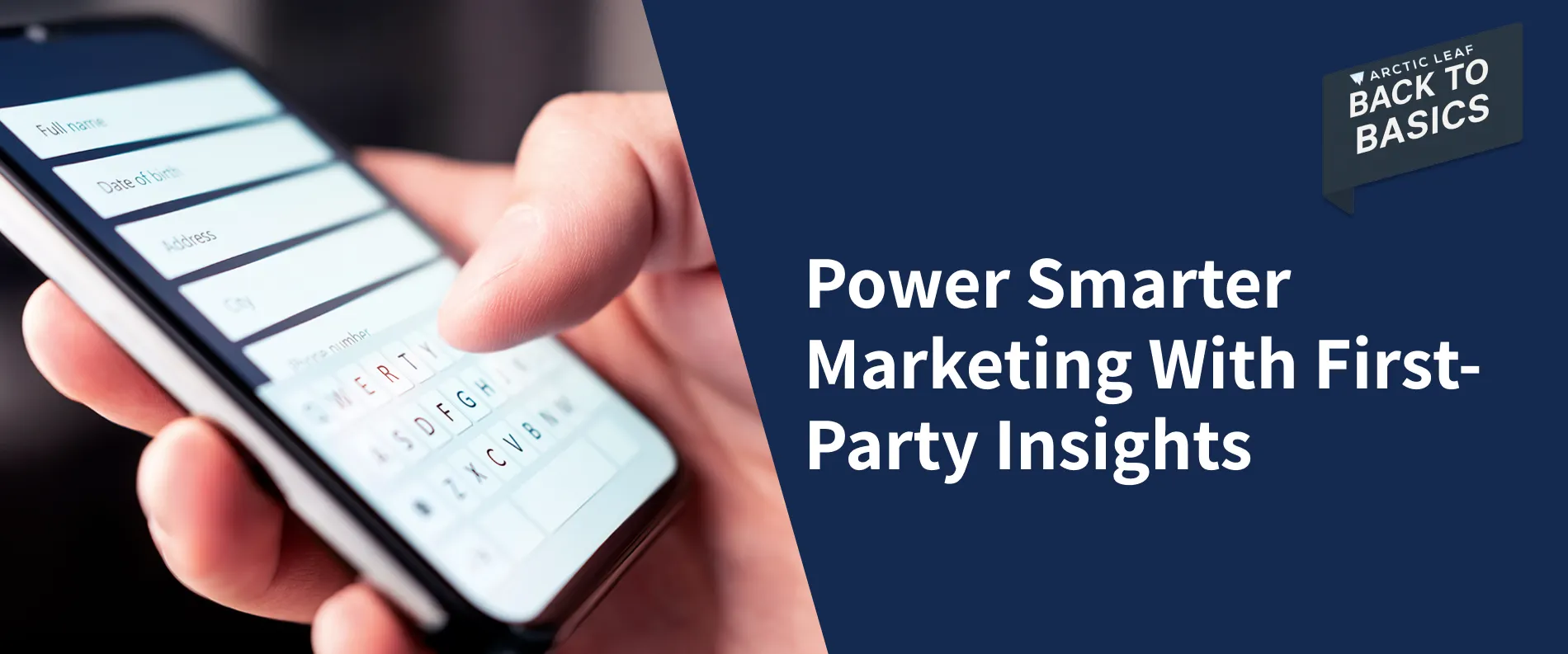The Power of First-Party Data: How Brands Can Adapt in a Cookieless World
Key Takeaways
-
First-party data helps brands target the right audience with accuracy.
-
Client segmentation improves targeting with personalized messaging.
-
Data governance ensures compliance and protects sensitive customer data.
-
First-party data helps map customer journeys for optimized experiences.
-
The right tools are key for managing and activating first-party data.
First-party data is an essential resource for brands looking to connect with their customers. With the shift away from third-party cookies, businesses are focusing on new ways to use their own data for smarter marketing. This blog covers what first-party data is, why it matters, how brands can use it for better targeting, and how to manage it securely and successfully.
What Is First-Party Data & Why Is It Important?
First-party data is the information collected directly from your audience, whether through website interactions, customer surveys, or past purchase data. Unlike third-party data, which is often gathered by external sources, first-party data comes straight from the source: your customers. This makes it incredibly accurate and reliable for building strong connections with your audience.
Google initially planned to phase out third-party cookies for all Chrome users by 2025, with restrictions starting in 2024. However, in mid-2024, they reversed this decision, opting instead to give users more control over their tracking preferences. While third-party cookies are still being de-emphasized, Google is focusing on privacy-focused alternatives like the Privacy Sandbox rather than a full ban.
With data privacy becoming a priority, brands must look beyond third-party tracking. Privacy-focused alternatives, such as first-party data and contextual advertising, offer reliable ways to understand customer behavior while respecting user preferences.
How to Use First-Party Data for Better Targeting
First-party data allows brands to sharpen their marketing efforts and reach the right audience with greater accuracy. Here are some ways to put it to use:
-
Define Client Segments – Analyze behaviors, preferences, and demographics to create specific audience groups for more targeted messaging.
-
Personalize Marketing Efforts – Use past purchases, site activity, and survey responses to tailor emails, product recommendations, and ad campaigns.
-
Leverage a Customer Data Management Platform – Organize and analyze data in real-time to adjust marketing strategies based on customer behavior.
-
Use Data Activation Tools – Push targeted messaging across multiple marketing channels to increase relevance and engagement.
-
Optimize with Website Analytics – Track user activity to adjust content, offers, and messaging based on real-time data.
By applying these methods, you can improve targeting precision, refine client segmentation, strengthen customer relationships, and make marketing efforts more impactful.
Data Governance: Compliance & Security
As you gather first-party data, you must have a solid understanding of data governance. But, what is data governance and how does it impact your business? Data governance involves setting policies and procedures for managing and protecting customer data while maintaining compliance with laws like GDPR and CCPA.
With the increased focus on data privacy, adhering to proper data governance standards is not optional. Protecting sensitive customer data builds trust and supports compliance, and a reliable customer data management platform helps apply these standards across all touchpoints.
How First-Party Data Improves Customer Experience Mapping
Customer experience mapping involves tracking a customer's journey from awareness to purchase and beyond. By analyzing website analytics and first-party data, you can identify pain points, missed opportunities, and areas where customers drop off. This data allows brands to make adjustments in real-time and optimize the customer journey.
First-party data gives brands a clear view of customer behavior across multiple touchpoints, allowing them to map a more accurate customer journey. By integrating marketing automation tools, you can create personalized and timely messaging that guides customers toward conversion and builds long-term loyalty.
Best Tools for Collecting & Managing First-Party Data
To get the most out of first-party data, you need the right tools. Here are a few of the best platforms for collecting and managing this valuable resource:
-
Google Analytics: Key for understanding website analytics and tracking user behavior on your site.
-
Salesforce: A robust customer data management platform that helps you organize customer data and personalize at scale.
-
HubSpot: A powerful tool for marketing automation, allowing you to nurture leads based on their behaviors and preferences.
-
Segment: A platform for managing first-party data across different marketing channels while maintaining consistency and accuracy.
-
Adobe Experience Cloud: A comprehensive suite for data activation, helping you deliver personalized marketing across all customer touchpoints.
With these tools, brands can collect, organize, and activate first-party data to create more targeted customer interactions.
Conclusion
As privacy regulations evolve and tracking methods shift, first-party data is foundational for building strong marketing strategies. By mastering data governance, using a reliable customer data management platform, and optimizing customer experience mapping, brands can stay ahead in a changing digital environment.
At Arctic Leaf, we specialize in helping brands adapt to this new world by leveraging first-party data to create impactful, personalized marketing strategies. Let us help you use first-party data to connect with your audience in meaningful ways and keep your business ahead of the curve.







